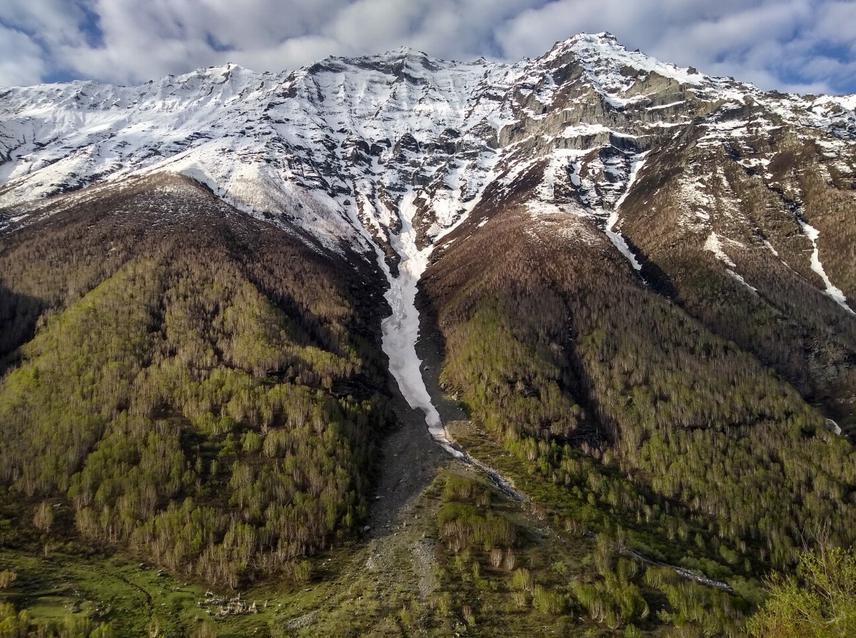Pranav Gokhale
Species have distinct breeding times in the year, and this reproductive phenology is often linked to the phenologies of other species for successful breeding. Many species have advanced their phenologies in response to the warming climate, and species are also shifting up the mountains to stay in their climatic envelope. Both of these factors lead to two-fold mismatches between the phenologies of species. Himalayan birds are also breeding early and moving up the mountain slope, potentially facing disastrous phenological mismatches.

Sural climate change, May 2022.
The aim of this project is to assess these mismatches at Sural (33.2oN, 76.5oE), Himachal Pradesh, India. Earlier, I studied breeding times and elevational distributions among three trophic levels: birch trees (Betula utilis), insects that eat the birch leaves, and Hume’s Warbler (Phylloscopus humei), which eats the insects. I found that the appearance of birch leaves and caterpillars on them was two weeks later in higher elevations, which does not appear to correspond well with warbler breeding time because reproductive success was lower at higher elevations.
I discovered that insect infestation on birch trees is higher in the lower elevations. However, it is not very clear if warblers have moved upslope, reducing their densities in the lower elevations and leading to the release of predation pressure on insects. As birds move upslope into novel higher elevations, they might not be supported by the required insect diversity and phenology because insects (dependent on plants) might move slower than birds. Also, we do not know what the nest predators are, the fourth trophic level, which can potentially lower reproductive success.
Through this project – I will answer these questions as it has become an urgency to save species from extinction due to climate change related phenological mismatches.
Header: Sural climate change, May 2023.